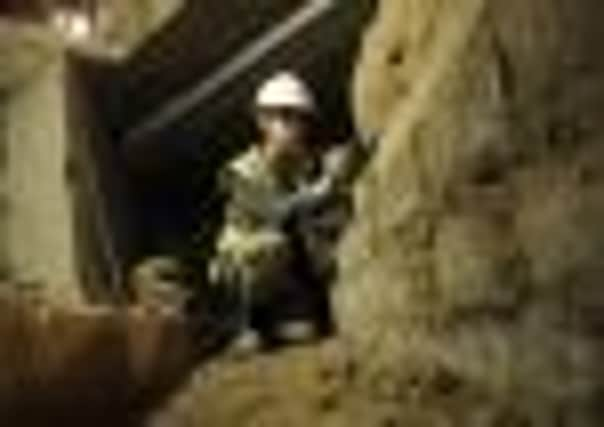Treading in footsteps of Romans


A backstreet linking two of the most important buildings at the epicentre of York in the Roman era has been uncovered by archaeologists for the first time in 40 years, and it is hoped that detailed analysis will help shed new light on life in the city two millennia ago.
The street would have been used on a daily basis by some of the most important figures passing between the Roman fortress headquarters, called the Principia, and the Praetorium, which was the nearby living quarters of military commanders.
Advertisement
Hide AdAdvertisement
Hide AdHistorical experts believe the route would have been an informal meeting point for the upper echelons of Roman society, who would have discussed the most pressing matters – as well as the latest gossip – along the short street.
Members of the York Archaeological Trust have taken a three-foot section of the road away for laboratory tests which it is hoped will show how the city has evolved through the passing of the centuries.
Traces of animal droppings or cereal grains could lie trapped in the soil, showing that the route was used by traders, farmers and animal herders after the Romans had departed York in AD410.
The York Archaeological Trust’s lead archaeologist, Ian Milsted, told the Yorkshire Post that while previous excavations had uncovered the road, it was the first detailed analysis of its remains.
Advertisement
Hide AdAdvertisement
Hide Ad“It is a huge privilege to be given the opportunity to stand in a space where some of the most influential members of Roman society in York would have walked on a daily basis,” Mr Milsted said. “This will almost certainly be one of the last times that the road is exposed in my lifetime, so it is a wonderful chance to be able to try to analyse a section of the street and see what clues it can provide.”
The dig is being conducted before a lift shaft is created to give visitors easier access to the undercroft as part of the £20m York Minster Revealed project.
The five-year initiative, which is due to be completed in the early summer of 2016, is the largest conservation project of its kind in the UK.
As well as improved access to the cathedral, state-of-the-art multi-media galleries, new displays of historic collections and interactive interpretations will also be created.
Advertisement
Hide AdAdvertisement
Hide AdThe project is being funded by a £10.5m grant from the Heritage Lottery Fund, with the remainder raised by York Minster.
Mr Milsted claimed the dig at the minster was a “once-in-a-lifetime opportunity” after the last excavations took place between 1967 and 1972 when underpinning work was carried out to prevent the minster’s central tower from collapsing.
During that work, archaeologists found the remains of the Roman fortress headquarters and an Anglo-Scandinavian graveyard, and were able to establish the Norman cathedral’s limits.
The latest excavations have established that the backstreet, which was part of the Via Quintana, would have been used for more than 300 years from the second century. It was constructed of cobbles set in mortar on a solid clay foundation, and has been resurfaced on two occasions.
Advertisement
Hide AdAdvertisement
Hide AdFragments of the stone flags from the roofs of decaying Roman buildings along with mortar and rubble have been discovered on the road.
The Dean of York, Vivienne Faull, said: “While it was not as grandly paved as the main streets of Roman York, you can imagine that this backstreet, situated as it was between the Basilica and the Praetorium, was exactly the kind of place where the real business of the Empire was done.
“It probably even witnessed the very first Christians on their way to worship.”
The Roman road will be one of the key elements of a bid to detail the minster’s ancient past which will be revealed in February when the archaeological analysis on this year’s excavations is released. Events and activities are also planned as part of the Jorvik Viking Festival, in partnership with York Archaeological Trust.